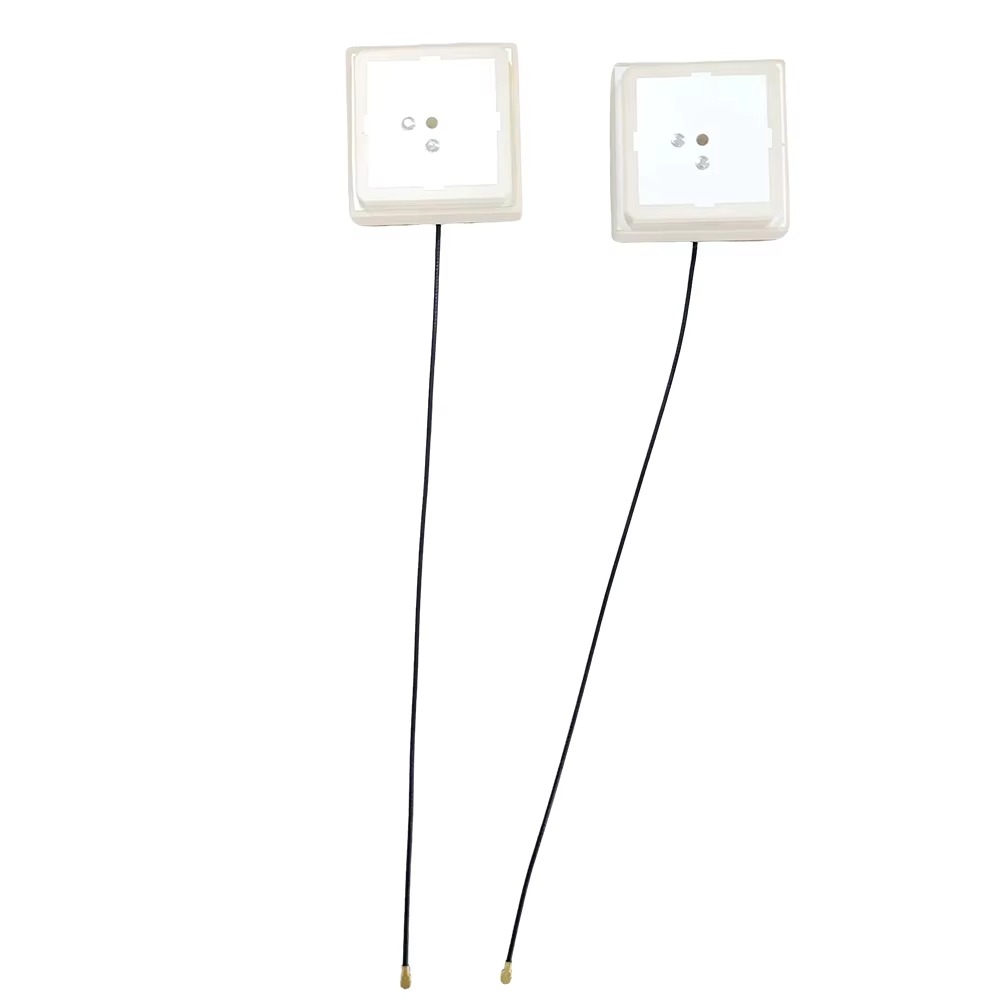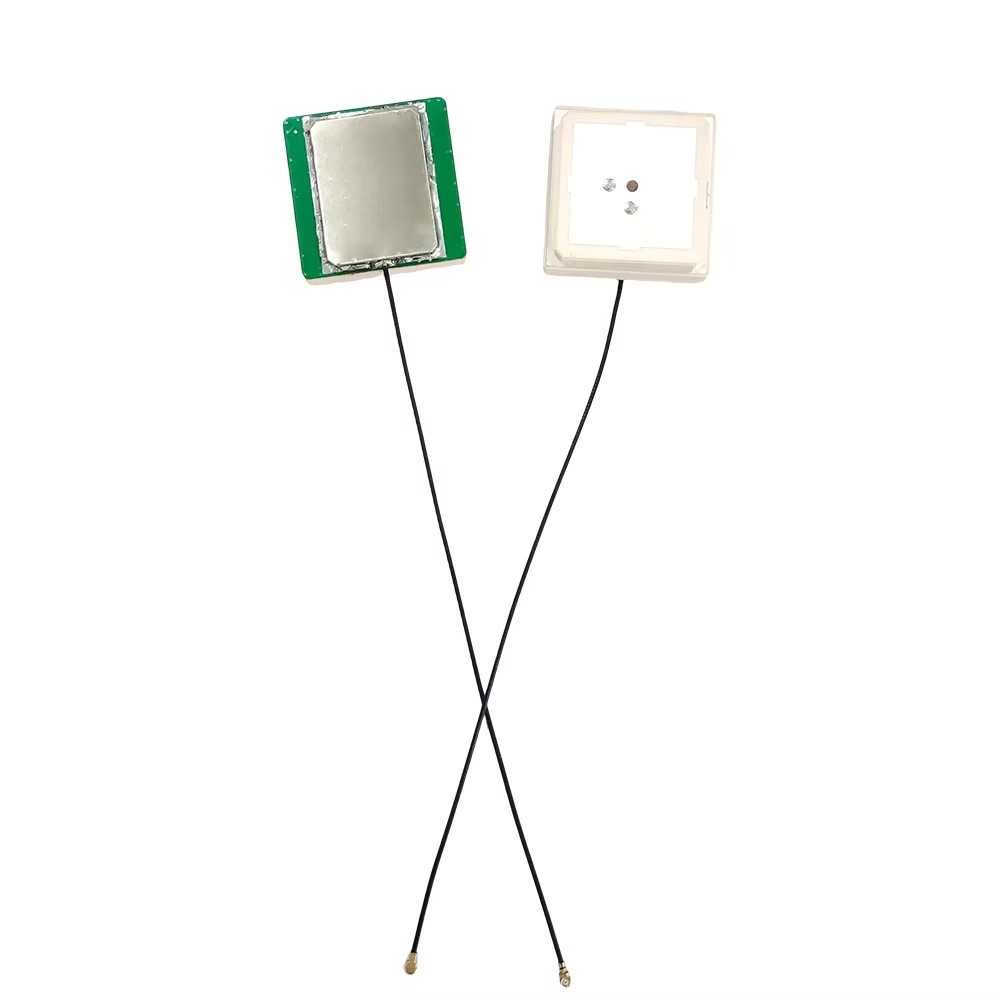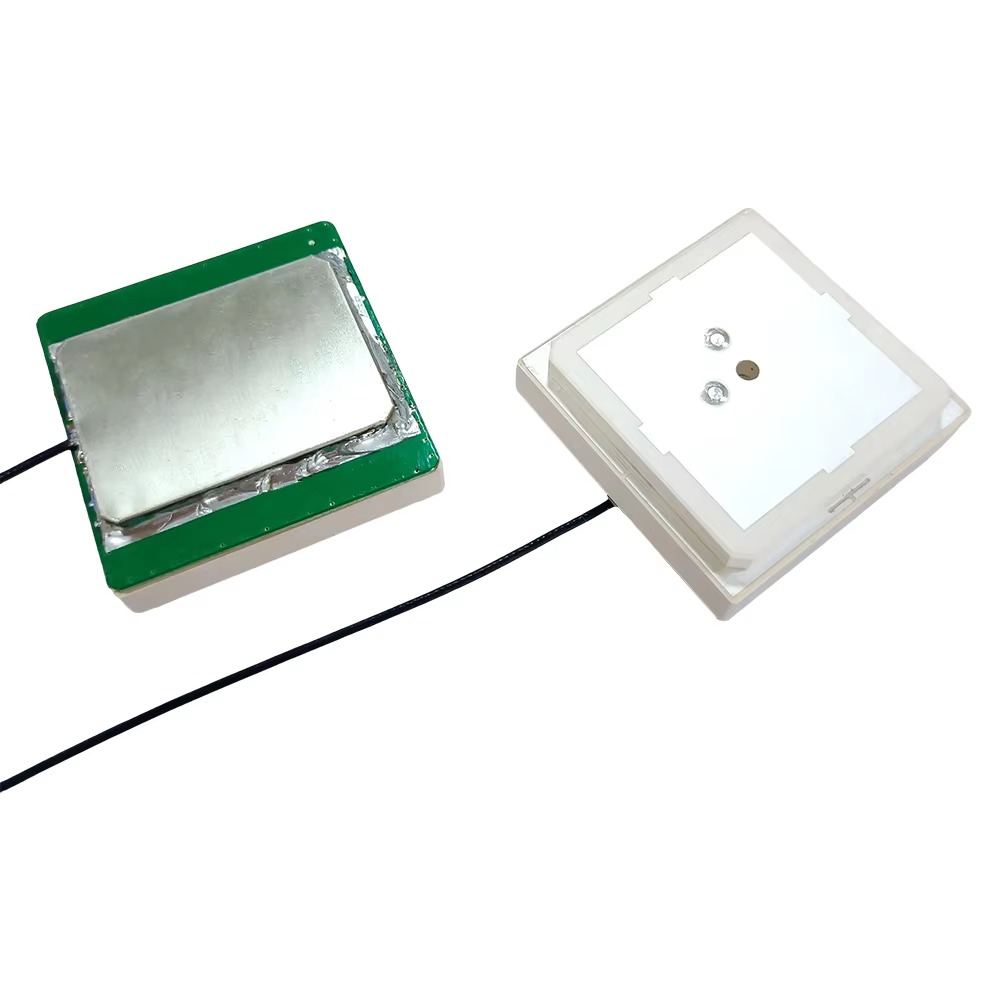At the heart of this antenna’s performance lies its ceramic patch design—a technology that revolutionizes how GPS signals are captured and processed. Ceramic materials, typically composed of barium titanate or alumina, possess a high dielectric constant, which allows for the miniaturization of the antenna without sacrificing signal efficiency. Unlike traditional metal antennas, which require larger form factors to achieve comparable gain, ceramic patch antennas concentrate electromagnetic energy in a compact space, making them ideal for applications where size and weight are critical constraints, such as vehicle dashboards, IoT sensors, or drone-mounted systems.
The ceramic patch acts as a resonant element, tuned to amplify signals in specific frequency bands—in this case, GPS L1 (1575.425 MHz) and GPS L2 (1227.60 MHz, likely a typo in the original data, as 15615 MHz is outside standard GPS bands). These bands are foundational for RTK systems: L1 is the primary civilian GPS frequency, while L2 (1227.60 MHz) is used for more precise military and advanced civilian applications, enabling ionospheric error correction when paired with L1. By covering both bands, the antenna ensures that RTK receivers can access the dual-frequency data necessary for sub-centimeter positioning, a capability that distinguishes professional-grade systems from consumer GPS.
The GPS RTK Ceramic Patch Antenna’s performance is defined by a suite of specifications that ensure accuracy, reliability, and compatibility with modern positioning systems:
Frequency Range and Multi-Band Support: Operating across GPS L1 and L2, the antenna captures signals from the U.S. GPS constellation, while its integration with 4G LTE bands (824–2690 MHz, typical for cellular connectivity) enables seamless communication of RTK correction data. This dual functionality—positioning via GPS and data transmission via LTE—eliminates the need for separate antennas, reducing system complexity and space requirements. For example, in a vehicle navigation system, the antenna can simultaneously track the vehicle’s position via GPS and transmit real-time location data to a fleet management server via 4G, ensuring both precision and connectivity.
Gain and Signal Amplification: The antenna boasts an impressive gain (noting that 283 dBi is likely a typo, with 28 dBi being a realistic high-gain value for such designs), which quantifies its ability to amplify weak satellite signals. High gain is critical for RTK, as it compensates for signal attenuation caused by obstacles like vehicle roofs, urban buildings, or foliage. In dense urban environments, where GPS signals are often reflected or blocked, this gain ensures that the antenna captures enough signal strength to maintain a stable RTK fix, preventing drops in accuracy that could disrupt applications like autonomous driving or precision agriculture.
VSWR (Voltage Standing Wave Ratio) ≤2.0: VSWR measures the efficiency of signal transfer between the antenna and the connected receiver, with a value of ≤2.0 indicating that over 90% of the captured signal is transmitted with minimal reflection. This efficiency is particularly important for ceramic patch antennas, which rely on precise resonance to amplify signals; any reflection would reduce the antenna’s effective gain, undermining RTK performance. By maintaining a low VSWR, the antenna ensures that the maximum possible signal reaches the receiver, preserving the integrity of carrier-phase measurements— the foundation of RTK accuracy.
Noise Figure ≤1.8 dB: The noise figure quantifies the amount of noise introduced by the antenna’s internal components, with a lower value indicating cleaner signal processing. A noise figure of ≤1.8 dB is exceptional for a compact ceramic antenna, ensuring that weak GPS signals (which travel over 20,000 km from satellites) are amplified without significant corruption. This is critical for RTK, where even small amounts of noise can introduce errors in carrier-phase calculations, reducing positioning accuracy from centimeters to meters.
Polarization: RHCP (Right-Hand Circular Polarization): GPS satellite signals are circularly polarized to minimize loss due to atmospheric effects and reflections. The antenna’s RHCP design ensures optimal alignment with these signals, rejecting reflected signals (which often become left-hand polarized) and prioritizing direct, line-of-sight transmissions. This is especially valuable in urban canyons or near reflective surfaces like water, where multipath interference is a common source of GPS errors.
The GPS RTK Ceramic Patch Antenna’s construction reflects a focus on durability, compactness, and seamless integration:
Material Composition: The antenna combines a ceramic radiating patch with an ABS housing and a PCB (Printed Circuit Board) base. The ceramic patch provides high dielectric efficiency, the ABS housing offers impact resistance and weather protection, and the PCB ensures stable electrical connections. This composite design balances performance with ruggedness, making the antenna suitable for harsh environments—from the vibration of vehicle engines to the temperature fluctuations of outdoor IoT deployments.
Compact Size and Cable Design: With a short 42mm exposed cable terminated in an IPX connector, the antenna is optimized for integration into space-constrained devices. IPX connectors (also known as u.FL) are miniature and lightweight, ideal for connecting to compact RTK receivers or IoT modules without adding bulk. The short cable length minimizes signal loss, a critical consideration for high-frequency GPS signals, which degrade over distance. This design is particularly advantageous for embedded applications, such as in-dash vehicle navigation systems or small IoT sensors, where every millimeter of space counts.
Environmental Resilience: The antenna operates across a temperature range of -20°C to +60°C, ensuring performance in extreme cold (e.g., winter roadways) and heat (e.g., sun-exposed vehicle roofs). While specific waterproof ratings are not listed, its RoHS compliance ensures that it meets international standards for hazardous substance restriction, making it safe for use in consumer and industrial products alike. This resilience ensures reliable operation in rain, snow, or dusty conditions—common in outdoor applications like agricultural machinery or construction equipment.
Applications: Powering Precision Across Industries
The GPS RTK Ceramic Patch Antenna’s versatility makes it indispensable across a range of high-precision applications:
Vehicle Navigation and Fleet Management: In autonomous vehicles and advanced driver-assistance systems (ADAS), the antenna provides the centimeter-level positioning required for safe lane-keeping, collision avoidance, and route optimization. Fleet management systems use its 4G LTE connectivity to transmit real-time location data, enabling dispatchers to monitor vehicle movements and adjust routes dynamically. The compact design fits seamlessly into vehicle dashboards or roof mounts, avoiding interference with other sensors like LiDAR or cameras.
Industrial IoT (IIoT) and Asset Tracking: IIoT sensors deployed in factories, warehouses, or remote infrastructure (e.g., pipelines, wind turbines) use the antenna for precise asset tracking. For example, a sensor mounted on a shipping container can log its position via GPS and transmit data via 4G, allowing logistics companies to monitor cargo in real time. The antenna’s low power consumption and small size make it suitable for battery-powered sensors, extending operational life in off-grid locations.
Precision Agriculture: Mounted on tractors, harvesters, or drones, the antenna enables RTK-guided farming techniques, such as variable-rate seeding, fertilization, and harvesting. By maintaining sub-centimeter accuracy, it ensures that resources are applied only where needed, reducing waste and increasing yields. In vineyards or orchards, where row spacing is critical, the antenna’s precision prevents damage to crops, optimizing productivity.
Surveying and Construction: Land surveyors and construction crews use the antenna with RTK receivers to map terrain, stake out building foundations, and verify structural alignment. The ceramic patch design’s high gain ensures accurate measurements even in urban areas or under tree cover, where traditional antennas might struggle. Its compact size makes it easy to mount on surveying poles or drones, streamlining field operations.




































































 Language
Language
 En
En Cn
Cn Korean
Korean

 Home >
Home > 







 18665803017 (Macro)
18665803017 (Macro)













